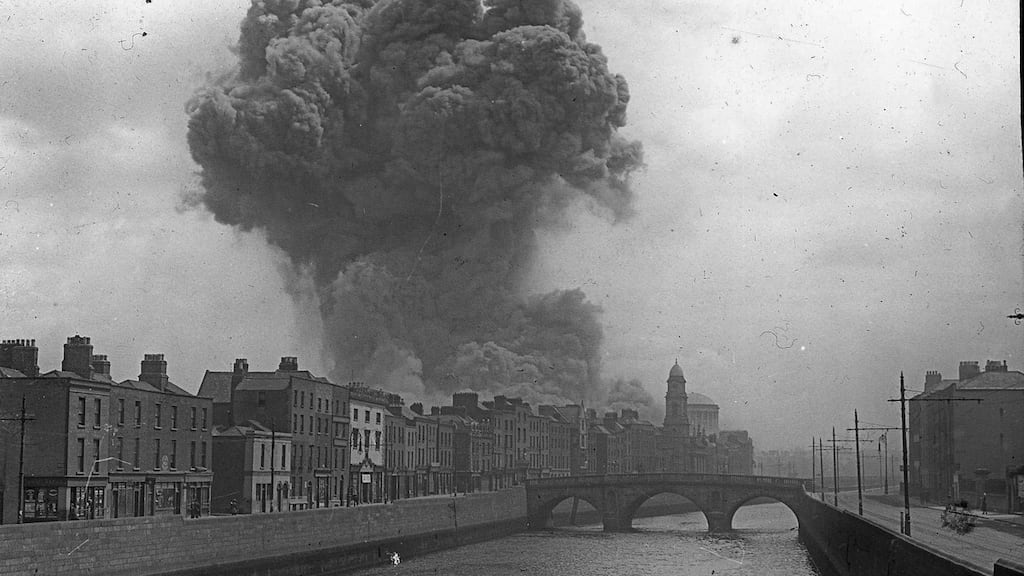The Civil War began 94 years ago when, on June 28th, 1922, the National Army attacked an anti-Treaty force which had occupied the Four Courts in Dublin since April of that year. After 60 hours of fighting and comparatively few casualties, the Four Courts garrison surrendered. Before the surrender an explosion occurred in the complex, the likes of which Dublin had never seen before, after which most of the buildings, including the Public Records Office, were destroyed by fire.
While researching a biography of TJ Byrne, the chief architect of the Office of Public Works from 1923 to 1938, I came across a paper he delivered in 1928 to the Institute of Civil Engineers of Ireland. In the paper he referred to the “great explosion”, and the damage it and the fires that had taken place during and after the siege had caused.
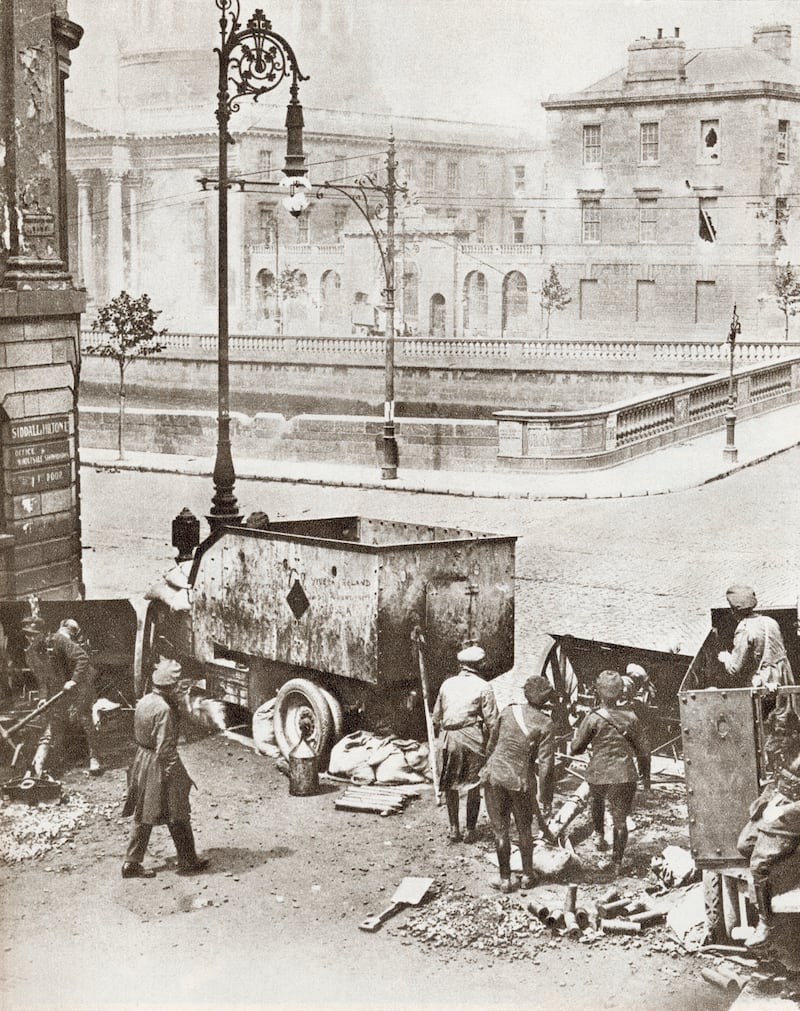
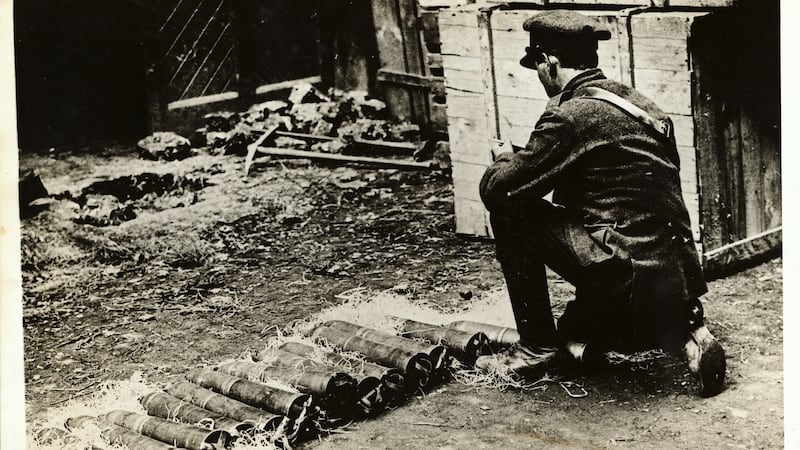
Many of the accounts that I had read indicated that this explosion was caused by “a great mine”, or a store of explosives (two lorry loads of gelignite mentioned by one historian, and four tonnes of explosives by another) being set off in the basement of the Public Records Office, creating the tall mushroom of smoke that can be seen in the well-known photograph, and scattering charred fragments of Ireland’s priceless historical records eastwards across Dublin.
Yet Byrne’s report makes no mention of any damage in the basement of the Public Records Office, stating that the basement under the Records Treasury, where the records had been stored, was not greatly affected by the conflagration that had occurred overhead. This basement was so intact that it was the first part of the Four Courts complex to be returned to use. He did clearly state, however, that the “great explosion” wrought “irreparable general damage” to the western end of the northern block, and subsequently I found that the newspapers of the day agreed that this was where the explosion had occurred.
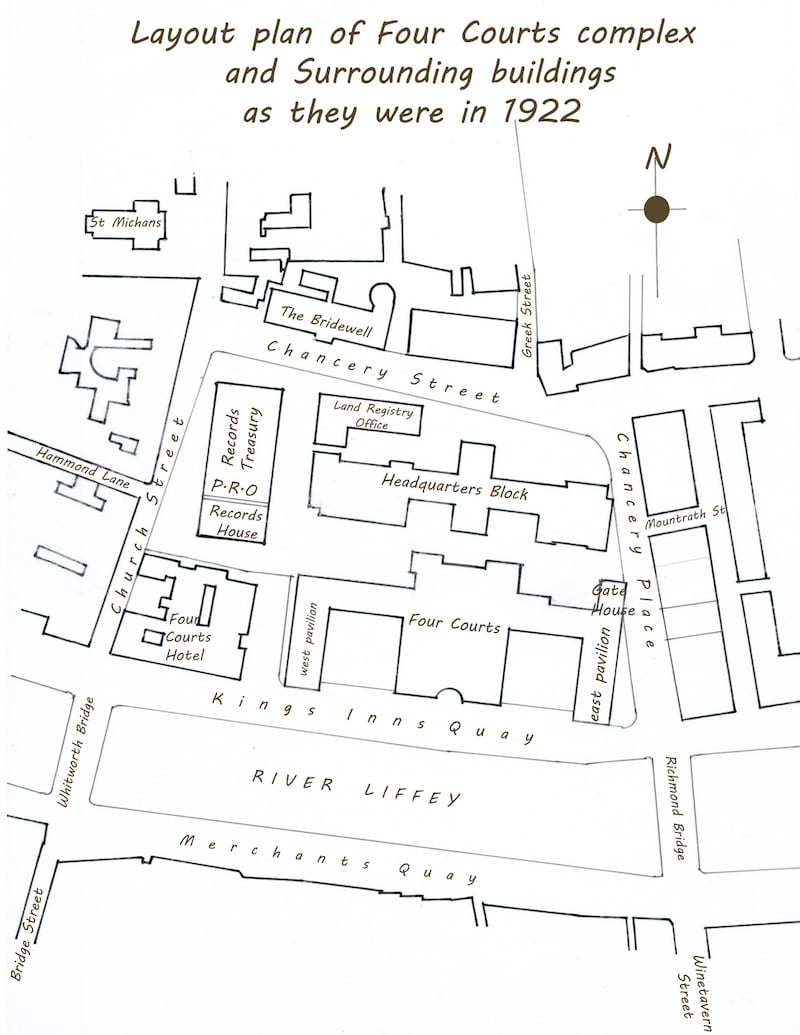
The northern block, used by the anti-Treaty garrison as their headquarters, was a building that stood to the east of the Public Records Office and north of the well-known Four Courts block, and ran the length of the courts. Built in the mid-19th century, it accommodated divorce and land courts, offices for the Land Judges, the Incorporated Law Society’s offices and the headquarters of the Honourable the Benchers of King’s Inns.
A report in The Irish Times the following day describing the explosion mentioned that the charred papers that were scattered around the city mainly belonged to the probate, divorce or land judge’s departments, documents that would have been stored in the western end of the northern block. Photographs I located in the Irish Architectural Archive were final confirmation for me that the explosion did not occur in the Public Records Office.
This is not to say that the Records Treasury above ground, together with all its priceless contents, was not destroyed on that day. As I found, however, this destruction was not directly caused by the deliberate detonation of a store of explosives or, indeed, a landmine that had been placed in the basement of that building by the anti-Treaty garrison. It seems, instead, that barrels of paraffin and petrol had been stored in the ‘Headquarters Block’ before the beginning of the siege in preparation for setting fire to the building. This was apparently done on the last morning of the siege, Friday, June 30th, and the fire set off a large store of explosives in the west end of the building. The explosion spread the fire to main Four Courts block and the Records Treasury, eventually causing their destruction. The previous day, National Army troops had captured the Records Treasury, which had been used by the anti-Treaty garrison as a munitions factory, and they had cleared the building of explosives. They were in occupation there when the “great explosion” took place in the adjacent Headquarters Block, and although many were injured, there were no fatalities recorded.
As I delved further into the matter, I was disturbed to find that not only were the significant details of the “great explosion” often wrongly reported by historians, but other inaccurate stories of crucial events that took place during the battle of the Four Courts have become what Prof Tom Garvin has dubbed “factoids”, that is, they have become the accepted facts, “well-nigh impossible to eradicate from the historical record and the popular consciousness”.
The attack by the National Army on an anti-Treaty force entrenched in the Four Courts was one of the most important events in modern Irish history, if not the most important. The Four Courts has been, since its completion in the early 19th century, a significant physical presence along the Liffey quays in Dublin, and because fighting during the first hours of the Civil War was mainly confined to the area immediately surrounding the complex, the battle drew large crowds of spectators, and the action was comprehensively recorded in newsprint, photographs and even newsreel film. In spite of this it is clear, from some accounts of the battle, that the authors had little or no knowledge of the physical nature of the buildings in the Four Courts complex, their external and internal layouts and indeed, something as simple as the number of buildings in the courts complex.
In 1922, as today, the complex contained four distinct buildings, the Four Courts, the Public Records Office, the north block and the Land Registry Office. Dorothy McArdle, who was in Dublin at the time of the battle, suggested her lack of understanding of the complex in her account of the battle, by referring to the Four Courts as “the building”. Recent publications, including the prestigious Atlas of the Irish Revolution, have maps describing the complex which fail to show one of the four buildings on the site, the Land Registry Office. Although the smallest of the buildings on the campus, it protected much of the north block, which the anti-Treaty garrison had made their headquarters and where they stored their explosives, from observation and gunfire from the National Army-occupied Bridewell Police Station.
It is difficult to understand how any accurate analysis of the battle that took place over those three fateful days in June 1922 could be carried out without such knowledge.
Some historians were scathing in their accounts of what was regarded as the inability of the National Army men to competently operate the 18-pounder QF field guns, borrowed from the British army, used in the siege. I looked carefully into the challenges that these men faced, seeking the advice of a retired Irish Army artillery officer on what was involved in the operation of these field pieces. After a thorough examination of contemporary photographs, I came to the conclusion that, with the little experience they had, and no practice, those novice gunners did very well and carried out, to the letter, the orders they had been given.
At about 9pm on the evening before the siege began, Maj Gen Emmet Dalton, Comdt General Tony Lawlor, Capt John Doyle and a number of soldiers drove in two lorries to the back gate of Marlboro Barracks, where two British Army QF 18-pounders and a supply of ammunition were handed over by 17th Battery, Royal Field Artillery. Dalton had fought with the British army in the Great War, been awarded the Military Cross and ended the war with the rank of major. Lawlor had joined the Royal Flying Corps at the age of 18 and seen two years of the Great War. It seems that he had some knowledge of artillery; a few months before he had been given command of the artillery barracks at Athlone and had begun training men in the operation of an obsolete 15-pounder gun left behind by the British.
Lawlor and Dalton had been students together at the Royal College of Science and they both joined the IRA on their return to Ireland after the war. Overseeing the handover of the guns on the British side was Maj Colin Gubbins, later to make a name for himself as commander of the Special Operations Executive during the second World War. British army records show that the guns were handed over at “11.59 am”. This has to be a mistake; it is more likely that the time was 11.59pm. The guns probably came with the 96-page manual, Gun Drill for 18-pounder Q.F. Gun, of 1920, which describes, comprehensively and in the simplest terms, the duties of each member of the six-man gun crew.
It seems reasonable to suggest, however, that the three hours that elapsed between Dalton setting out to get the guns and the official handover left sufficient time for the National Army crews to receive basic instruction in the operation of the 18-pounders. In normal battlefield operations, these guns were used to fire shrapnel shells that would air-burst over advancing infantry, or lay down a high-explosive barrage, at ranges of up to 6,000 yards. The sighting arrangements for this kind of firing were complex, but the guns that were used on the Four Courts were operating at very close range, less than a couple of hundred metres, and with such ranges, they could be quickly and simply sighted through the open breeches.
The initial task set for the gunners was to lay a barrage against the walls of the old buildings in the expectation that, when the garrison experienced the thunderous impacts of shells, they would soon surrender. Apart from a couple of gaps (which may be explained by the existence of obstructions such as lamp posts close in front of the guns), the two inexperienced gun crews succeeded in laying a competent spread of shells along every few metres of the courts facades, to make sure that everyone in the building was fully aware of being under artillery fire (see sketch).
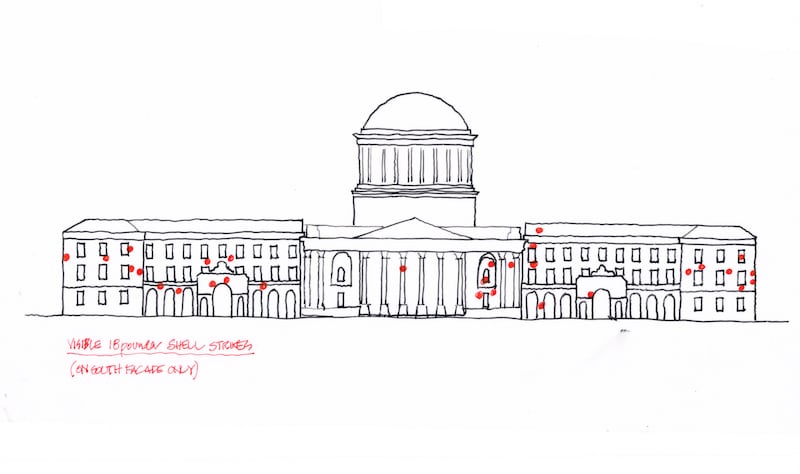
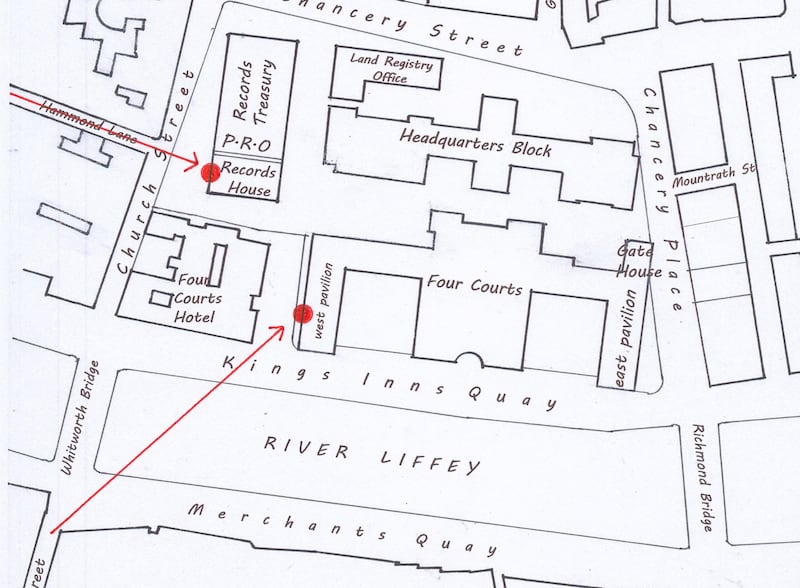
When, after more than 24 hours, it became clear that this tactic was not going to work, a decision was made to attack the courts with infantry, and the crews were given new orders. Two substantial breaches were to be created to allow access for the infantry to the interior of the buildings, one in the west façade of the west pavilion of the Four Courts, and the other in the west façade of the administrative offices of the Public Records Office. With regard to the former, this was no easy task for an inexperienced crew. They had a narrow ‘window’ in which to place their shells: they had to make sure to ‘miss’ a telegraph pole just across the road from where they were firing, and avoid hitting the block which included the Four Courts Hotel, the battle headquarters of the National Army, and which was only metres away across Morgan Place from the west wing. In both cases, the required breaches were made of sufficient size, in the right places, in a short space of time.
On the day after the siege ended an Irish Independent correspondent praised the men operating the guns, stating “…it is a marvel, perhaps without precedent, that an artillery action went on, beginning on Wednesday morning about 4 o’clock, and continuing all through Wednesday, Thursday, and up to noon on Friday in the heart of the city…. without doing any random damage to the persons or property of the citizens…when a large part of the Four Courts had been captured the artillery continued to work with precision and co-operation with the forces that had entered the positions –a feat, the difficulty of which can be realised by those who know the plan of the Four Courts.”
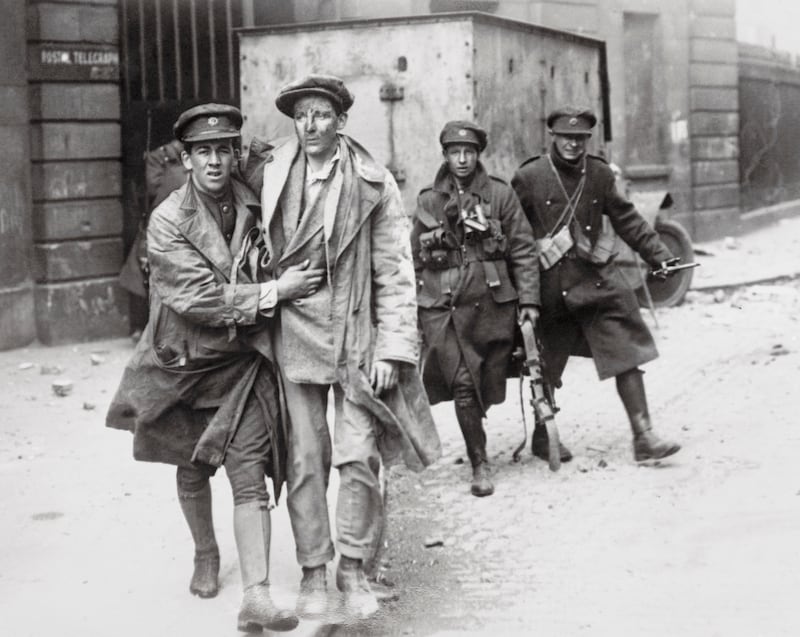
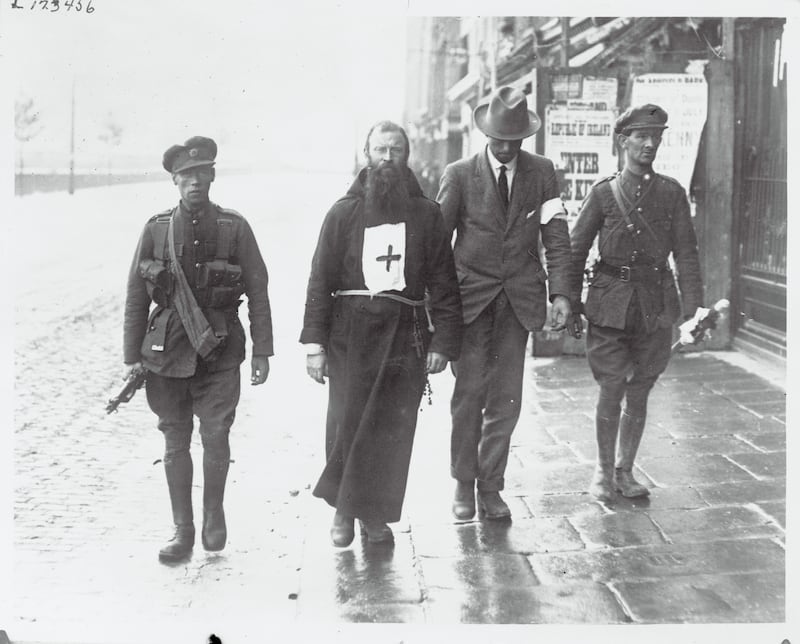
I am not an historian, but the many inaccuracies I came across in accounts that I had read about the critical first hours of this major event in Irish history encouraged me to attempt to clarify the facts of the matter, even at this late stage, nearly 100 years later. The result, after nearly five years of fascinating forensic investigations using contemporary technical information, photographs, reports and digital models, is The Battle of the Four Courts: The First Three Days of the Irish Civil War, which has just been published by Head of Zeus.
